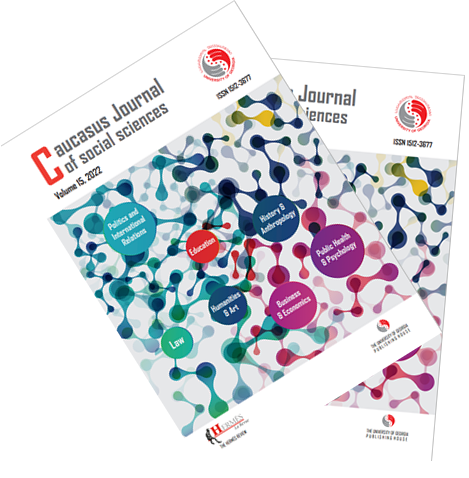The Role of the Acceptance Zone in the Psychology of Set
DOI:
https://doi.org/10.62343/cjss.2015.153Keywords:
Dispositional Attitude, Value Orientations, Assimilative Evaluation, Contrastive Evaluation, Proximity-DistanceAbstract
The given study has identified the Acceptance Zone as an important attitude dimension.
The Acceptance Zone can measure the conscious acceptability of behaviors, statements, judgments and evaluations related to positions different from the research participant’s position during assessment.
The study shows a statistically significant correlation between an Acceptance Zone and attitude/typological characteristics.
Narrow Acceptance Zone (about 25% of research participants): Extreme and one-sided point of view; low level of acceptance of others’ opinion, low level tolerance (acceptability); high confidence, locus control falling within the mid-range, competitiveness in conflict situation.
Moderately wide Acceptance Zone (about 50% of research participants): higher level of tolerance; intense feeling of self-confidence, social courage, success and inner strength; low intensity of conflicts, compromise/competitiveness and higher level of cooperation in conflict situations.
Wide Acceptance Zone (about 25% of research participants): Moderate and versatile points of view; tolerance; external locus of control, hesitation; low self-confidence and internal conflicts; higher sociability; avoidance behavior in conflict situations.
Acceptance Zone is an important concept for attitude and behavior research. It can be also useful for Theory of Set and in general, for the psychology of Georgia. The Acceptance Zone can be also used for a simple typological-character test. The concept in question can be considered with the development of simple tests measuring personality typology and character traits.
Downloads
Published
How to Cite
Issue
Section
License
Copyright (c) 2023 Nana Burduli

This work is licensed under a Creative Commons Attribution 4.0 International License.
In case an article is accepted for publication it is allowed to combine the article with other research, to conduct new research on the article, or to make different arrangements on condition that the same license is used including commercial purposes.
As an author of an article published in the Caucasus Journal of Social Sciences, you retain the copyright of your article and you are free to reproduce and disseminate your work.











